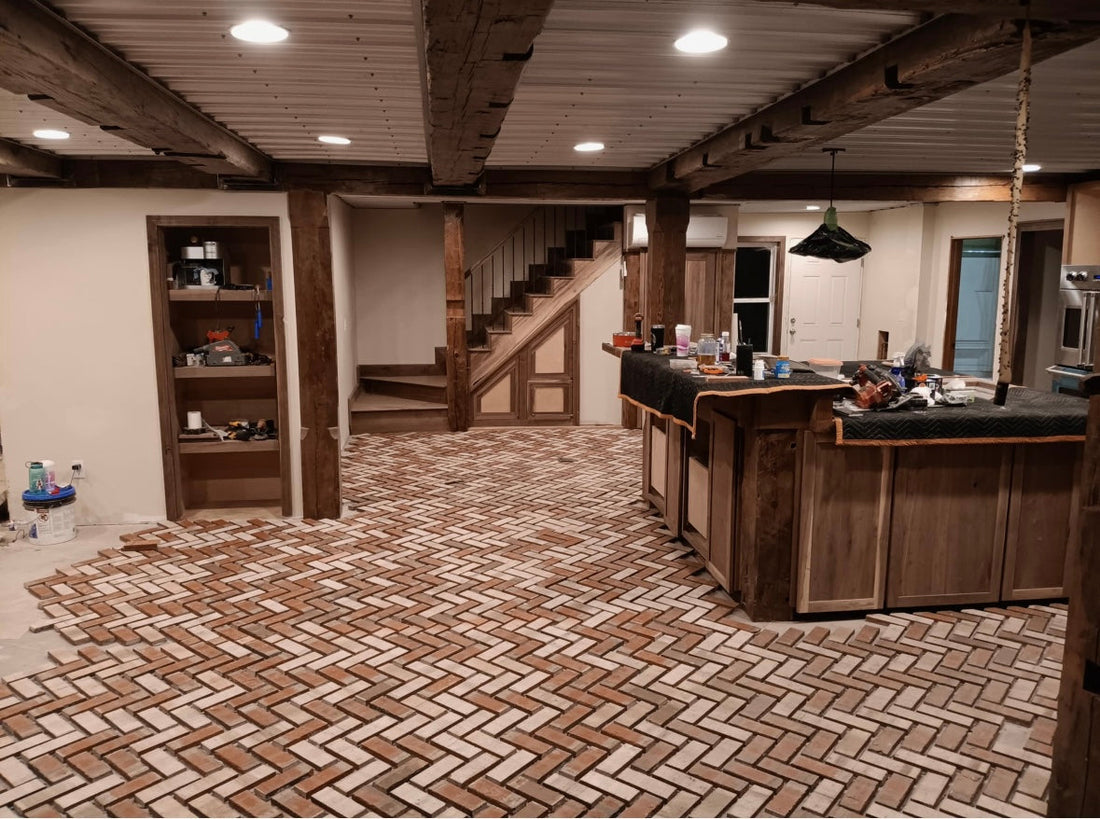The Enduring Appeal of Brick Flooring
Brick flooring has long been a favored choice for its rustic charm, durability, and timeless aesthetic. Whether in a cozy farmhouse kitchen or a sophisticated urban loft, the warmth and character of brick create an inviting atmosphere. However, traditional brick, while beautiful, can be quite thick and heavy, posing challenges for certain installations. This leads many homeowners and designers to ask: Can thin brick be used for flooring? The answer, in short, is a resounding yes, and with significant advantages!
What Exactly is Thin Brick?
Thin brick, also known as brick veneer, is essentially a real brick that has been cut to a fraction of its original thickness. Typically, it ranges from 1/2 inch to 3/4 inch in thickness, compared to traditional bricks which can be 3-4 inches thick. This reduction in size and weight dramatically opens up a world of possibilities for its application, including flooring.
Advantages of Using Thin Brick for Flooring
Opting for thin brick flooring in 2025 comes with a host of benefits:
- Weight Reduction: The most significant advantage is the reduced weight. This makes thin brick suitable for upper floors, renovations where structural load is a concern, or installations where traditional masonry would be impractical or overly expensive.
- Ease of Installation: Its thinner profile makes it easier to cut, handle, and install compared to full-thickness bricks. This can translate to lower labor costs and a quicker project timeline.
- Versatility in Application: Thin brick can be installed in areas where traditional brick flooring might not be feasible, such as over existing concrete slabs or even on walls and backsplashes to create a cohesive look.
- Aesthetic Authenticity: Thin brick offers the genuine look and feel of real brick. You get the same rich texture, natural color variations, and classic appeal without the bulk.
- Durability: Despite its thinner profile, thin brick retains the inherent durability of traditional brick. It's resistant to wear, scratches, and moisture, making it an excellent choice for high-traffic areas.
- Cost-Effectiveness: While the initial material cost might be comparable to some traditional bricks, the savings in shipping, labor, and potential structural reinforcements can make thin brick flooring a more budget-friendly option overall.
Considerations for Thin Brick Flooring Installation
While the advantages are plentiful, proper installation is key to ensuring the longevity and beauty of your thin brick floor. Here are some crucial points to consider:
Subfloor Preparation
The subfloor must be perfectly clean, level, and structurally sound. Whether you're installing over concrete or a wooden subfloor, ensure it's free of any debris, old adhesives, or unevenness. For wooden subfloors, a layer of cement backer board is highly recommended to provide a stable and moisture-resistant base.
Adhesive Choice
Using the correct thin-set mortar or adhesive is paramount. It needs to be specifically designed for tile and stone, offering strong bonding capabilities and flexibility. Your installer will select an adhesive appropriate for the type of thin brick and the subfloor material.
Grouting
Grouting not only fills the spaces between bricks but also adds structural integrity and prevents dirt and moisture from seeping through. Choose a high-quality grout and ensure it's properly applied and sealed. For flooring applications, consider epoxy grout or a high-performance cementitious grout for maximum durability and stain resistance.
Sealing
Sealing your thin brick and grout is a critical step, especially for flooring. A penetrating sealer will protect the brick and grout from stains, moisture, and wear, making cleaning and maintenance much easier. Reapplication of sealer may be necessary periodically, depending on traffic and use.
Edge and Transition Details
Pay close attention to how the thin brick flooring meets walls, doorways, and other flooring materials. Proper edging and transition strips are essential for a professional and durable finish.
Where Can You Install Thin Brick Flooring?
The versatility of thin brick flooring makes it suitable for a wide range of applications:
- Kitchens: Its resistance to spills and stains, coupled with its timeless appeal, makes it a perfect fit for busy kitchens.
- Bathrooms: With proper sealing and waterproofing, thin brick can add a unique, spa-like feel to bathrooms, particularly in shower floors or accent walls.
- Entryways and Hallways: These high-traffic areas benefit from the durability and easy maintenance of brick flooring.
- Living Areas and Dining Rooms: For a warm, inviting, and sophisticated ambiance, thin brick can transform living and dining spaces.
- Outdoor Patios and Porches: Some types of thin brick are suitable for exterior use, providing a seamless indoor-outdoor living experience.
Maintaining Your Thin Brick Floor
Caring for your thin brick floor is relatively straightforward:
- Regular Sweeping and Vacuuming: Remove loose dirt and debris to prevent scratching.
- Damp Mopping: Use a damp mop with a pH-neutral cleaner. Avoid harsh chemicals or excessive water.
- Immediate Spill Cleanup: Wipe up spills promptly to prevent staining.
- Periodic Sealing: Reapply sealer as recommended by the manufacturer, typically every 1-3 years, to maintain protection.
The Verdict: Thin Brick is a Flooring Star
In conclusion, thin brick is not only suitable for flooring but is an excellent choice for homeowners looking to achieve the authentic beauty and robust durability of brick with enhanced practicality and versatility. Its lighter weight, easier installation, and adaptability make it a modern solution for a classic material. So, when considering your next flooring project in 2025, don't overlook the incredible potential of thin brick – it might just be the perfect fit for your home.

